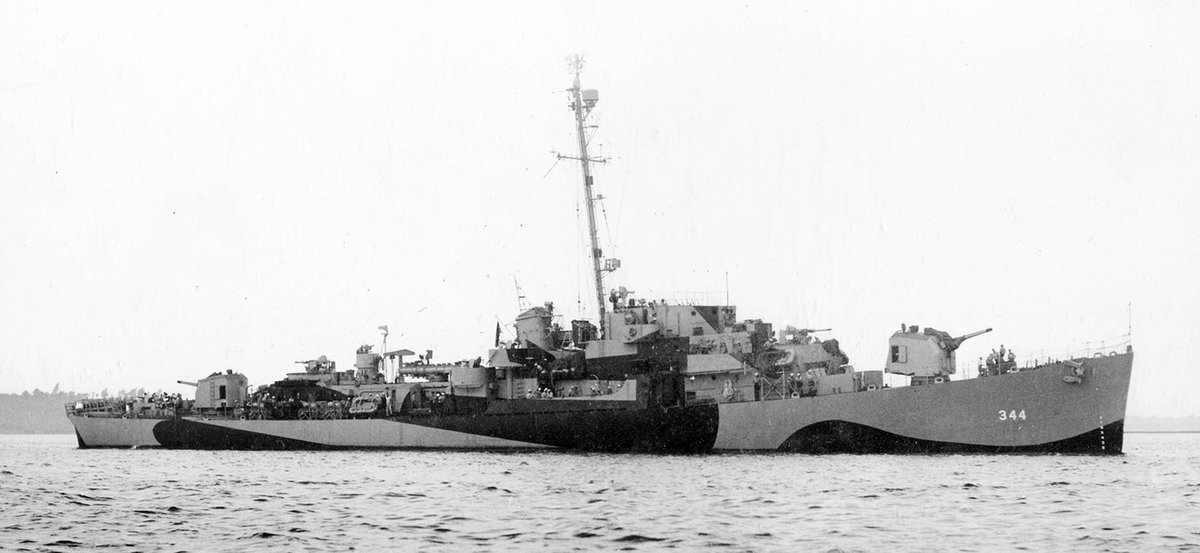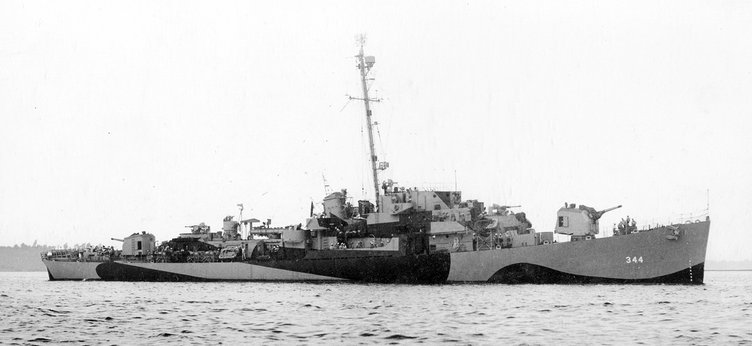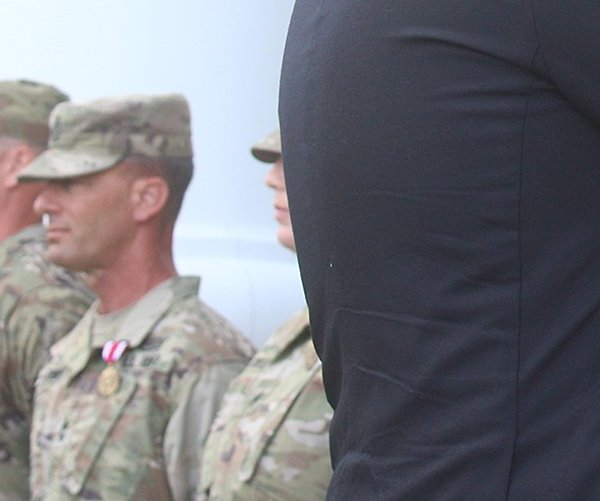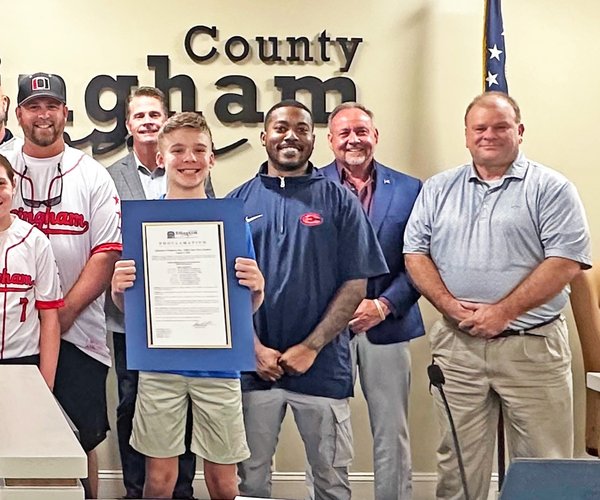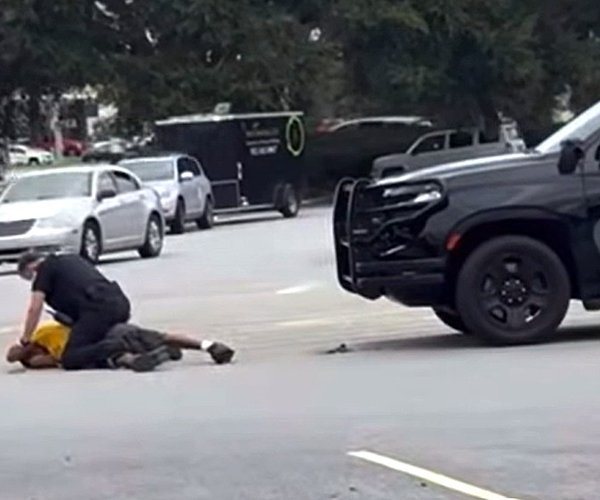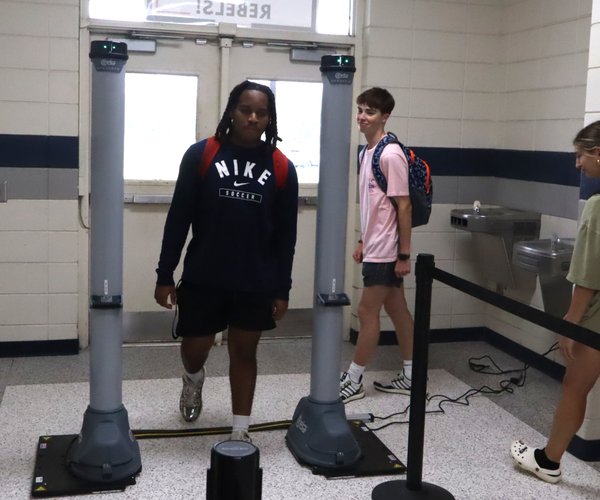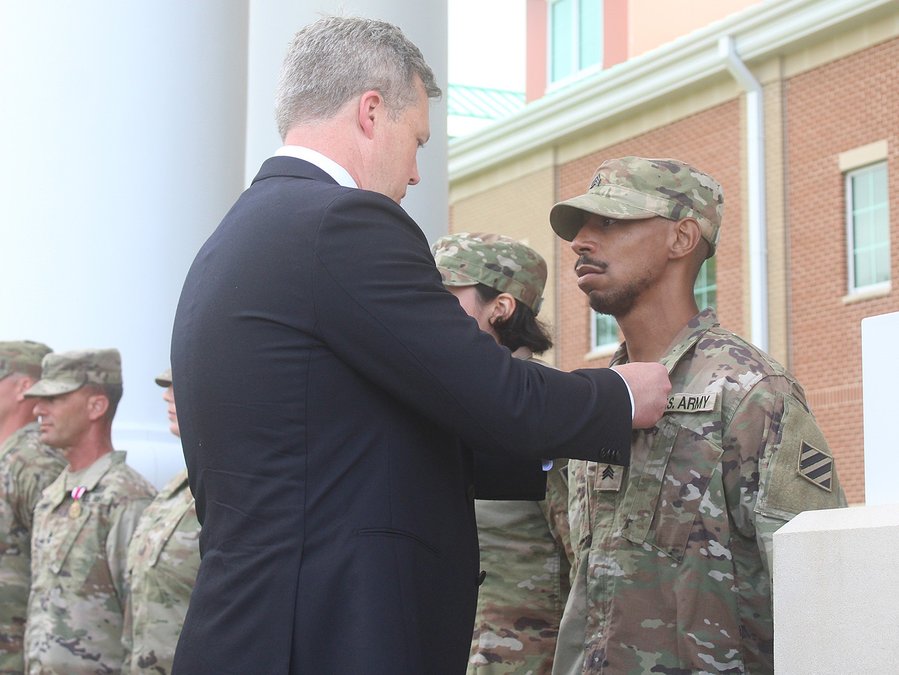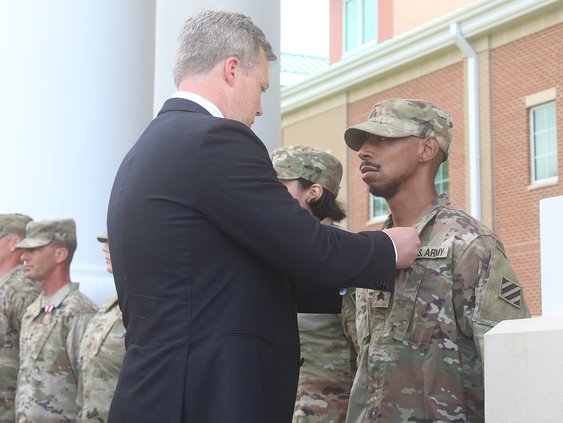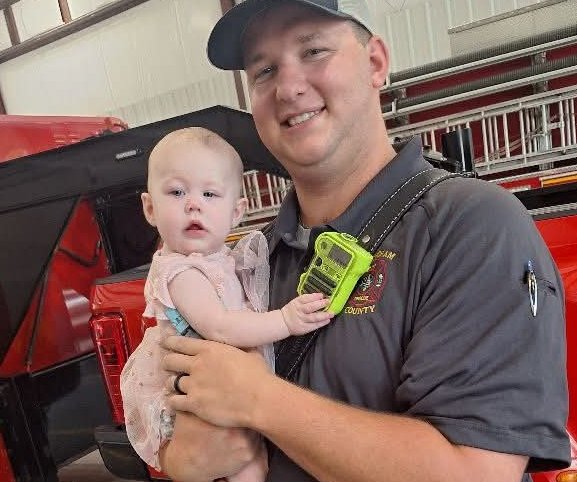

GUYTON — At the age of 17, Edward E. Cadle thought he was leaving hard times behind. Instead, he entered one of the most trying periods he and his nation have ever endured.
Cadle, now 96, joined the U.S. Navy in 1941, less than a month before Japan bombed Pearl Harbor on Sunday, Dec. 7, 1941.
“When (World War II started for the United States), I can tell you exactly where I was,” the 20-year Effingham County resident said. “I was walking up Pearl Street in Jacksonville, Florida. I had become a Christian while I was in the Navy and joined Brentwood Baptist Church.
“Of course, there was a girl there.”
Even though war had been rumbling in Europe for a couple of years, not everyone believed the United States was on the verge of being lured into it.
“The feeling wasn’t as imminent as a lot of people think,” Cadle explained. “Sailors don’t really think about war. We just think about living.”
Before the smoke cleared at Pearl Harbor, however, Cadle was ready to fight.
“Those of us who were already in the service were disappointed that we were not immediately shipped out,” he said. “On Monday morning after the bombing of Pearl Harbor, the officer of the day or the recruiting officer — whatever you called him — his room was packed with sailors who wanted to go (to Japan). It was unbelievable. You couldn’t get all of them in the room.
“And listen, we had good duty. I was in Jacksonville and had a beautiful girlfriend. We were all having fun.”
Cadle, a Hephzibah native, wasn’t having much fun before joining the Navy. His father died when he was nine years old.
“It was hard times,” Cadle said. “My mother and I lived with my youngest sister and her husband (in Augusta).”
Cadle was his father’s 18th child.
“He married twice,” Cadle said. “He had nine children by each wife.”
As a youngster, Cadle was a bit of a rebel. He hated going to school and was forced to repeat multiple grades. He quit school before earning a diploma and got a job making $3 a week delivering meat on a bicycle.
“I never got out of the seventh grade,” he said. “I played sick many a day.”
Cadle’s life took a fortuitous turn when he became a Christian during the early stages of his Navy career. He felt a calling to preach and started a 34-year career in the pulpit shortly after World War II ended.
A Christian outlook helped Cadle get through his military service. He witnessed many terrible things, especially when he was aboard the USS Oberrender as a cook during the closing months of the war.
“I think I had a peace that a lot of guys didn’t have,” he said. “I wasn’t afraid of dying. I knew God and I knew the Lord had changed my life.
“Still, I was a human being. I’m not going to tell you that I didn’t get scared.”
Cadle enjoyed his job when his ship wasn’t engaged in battle, plus he made $20 a week as a chief petty officer first class.
“I loved to cook. I still love to cook,” he said.
Cadle constructed an oven and baked pies and cakes.
“The guys appreciated it, too,” he said. “I got a lot of compliments.”
The USS Oberrender, with a crew of more than 200, was a John C. Butler-class destroyer escort that was commissioned in late 1944. At first, the crew had some down time.
“I didn’t gamble but a lot of that went on,” Cadle said. “I wrote a lot of letters. I saved the ones I got because I was happy to get them.
“It’s sad to say that some men never got a letter.”
Officers routinely censored sailor letters to make sure that they didn’t reveal sensitive information.
“In case that letter got intercepted, they didn’t want the Japanese to know where you were,” Cadle said.
During the Battle of Okinawa near the end of the Pacific phase of the war, the USS Oberrender was positioned about 20 miles off the coast of Okinawa with a group of five or six U.S. ships, including the USS Mount Hood.
“We were under attack every day and every night,” Cadle said.
During the Battle of Okinawa, Cadle’s job shifted repeatedly from loading sailors’ bellies with good food to loading huge guns.
“No matter what your (ranking) was, you had what was called a battle station — a place where you went to when you were under attack,” he said. “The place they gave me was handling five-inch projectiles. You have a five-inch gun and a handling room under there with the projectiles where they went in the gun.
“Then there was a storage room under there. That was my battle station. There was a hatch there and they would fasten it. I told them, ‘Fellows, this is the way it is going to be. If y’all lock me up down there and this ship gets hit, I’m not going down with it and suffocate so this is what I’m going to do. When it gets hit, I’m going to throw one of these bags of powder against the side of the ship and blow it up.’
“So they let me come up out of there and let me bring the ammunition up and store it in the handling room. It was something I had to do every night.
“There were no nights that we weren’t under attack — and it would go on for hours.”
The biggest threat to the USS Oberrender, which also featured 20 millimeter and 40 millimeter guns, didn’t come from Japanese bombs. Japanese fighter pilots willing to fly their planes into ships were much more dangerous.
“The guys just dove on us,” Cadle said. “That was something they did all the time. They were called ‘kamikazes.’
“Sometimes they would send a dozen at a time. We would shoot one down and then two more would be coming.”
The USS Oberrender was irreparably damaged by a kamikaze attack in May 1945.
“It hit in the middle of the ship toward the back,” Cadle said. “I was at my battle station under the handling room, which put me three decks down (below the waterline). I don’t mind telling you that it was scary. They could blow the ship up and you would be in it forever.
“Just because you were scared a little bit, you couldn’t quit, though. Where are you going to go?”
After Cadle was allowed to go on deck after the final kamikaze attack on his ship, he saw something that still haunts him.
He recalled, “There was a guy laying there covered up from his chin down with a blanket. He said, ‘Help me, Cadle. Help me, Cadle.’ So I grabbed the blanket and picked it up.
“He was burned up. He was barbecued. I will never forget that. I don’t see how he could have survived. I really don’t know.”
Apparently, the injured sailor believe he would make it, either.
“He said to me, ‘Cadle, I’m sorry,’ and I knew what he was talking about because he was always ragging me — all the time,” Cadle said. “As a Christian, you just take what you’ve got coming, or even if you don’t have it coming. You just take it.
“You don’t react to a guy like that and say, ‘I’ll beat your butt’ or whatever. I can still see that scene right now.”
Because of the unrelenting stress they were under, USS Oberrender sailors were granted a chance to return to the United States for leave. Their ship was decommissioned in July 1945 and sunk as a target later that year.
Cadle, assigned later to a carrier that was under construction in Rhode Island, was enjoying his relief time when the most decisive blows of the war were struck.
“Nobody realized that they were about to drop that (atomic) bomb (on Hiroshima on Aug. 6, 1945),” Cadle said.
A second atomic bomb was deposited on Nagasaki three days later, resulting in Japan’s unconditional surrender.
“It was really a relief but I didn’t know I wasn’t going to have to go back,” he said. “It wasn’t over until you’re out of there.”
Cadle never reported to his new ship. He was released from his military obligations after four years, nine months and 18 days.
He has been married to 99-year-old Inez for 73 years.
“Initially, when I joined (the Navy), I planned to stay,” he said. “It was a terrible time. I didn’t count myself as a kid by the time I got out.”
The USS Oberrender received three World War II battle stars, the Asiatic-Pacific Campaign Medal with three battle stars and the World War II Victory Medal.
